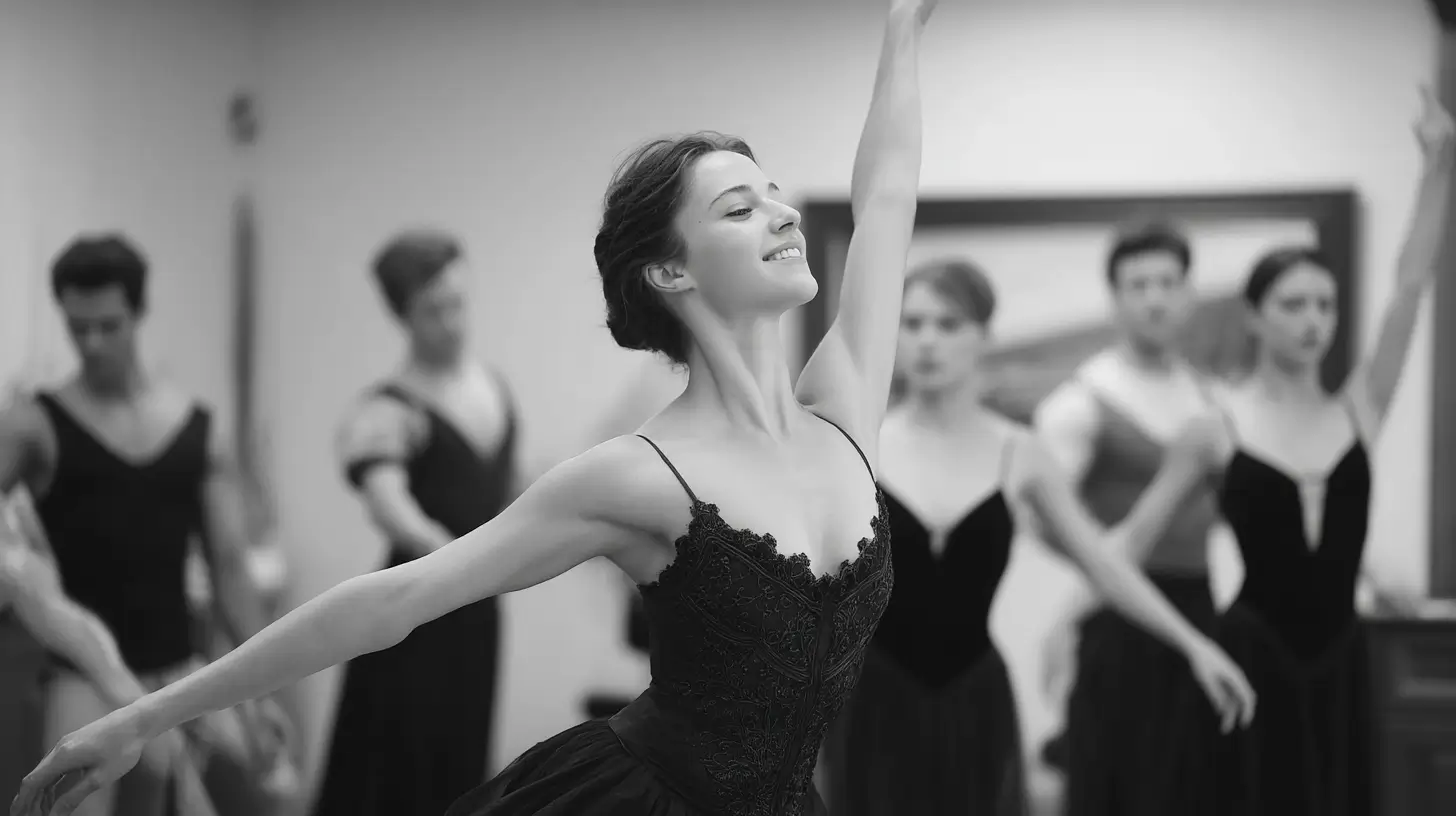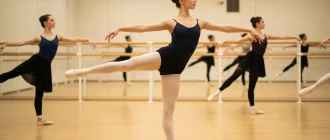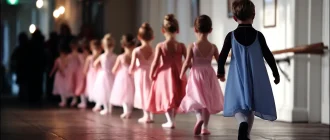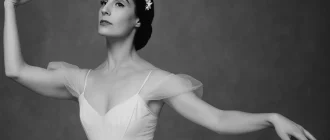Curious about what makes Cecchetti ballet unique? Cecchetti ballet is a classical method created by Enrico Cecchetti that focuses on rigorous, structured training. It’s known for building dancers’ strength, flexibility, and technical precision. In this article, we’ll explore the core principles, the historical impact of Enrico Cecchetti, and the benefits of training in the Cecchetti Method.
Enrico Cecchetti’s contributions to ballet training are profound, including establishing his ballet school, which has influenced the development of ballet education and training methods. Whether a beginner or an experienced dancer, you’ll find insights into why Cecchetti ballet remains a cornerstone of ballet training today.
Graceful Insights
- The Cecchetti Method emphasizes a systematic and progressive training approach that integrates strength and elasticity, enabling dancers to develop technical proficiency and artistic expression.
- Enrico Cecchetti’s legacy, reinforced by the Cecchetti Society, has standardized ballet training techniques, ensuring the preservation and promotion of his teachings to future generations.
- The method’s comprehensive training prepares young dancers for diverse ballet styles, fostering vital skills such as coordination, control, and a strong foundation in classical ballet techniques.
- The Enrico Cecchetti Diploma is a prestigious qualification that promotes strength, coordination, and quality of movement based on Cecchetti principles.
Art de Podcast
Understanding the Cecchetti Method
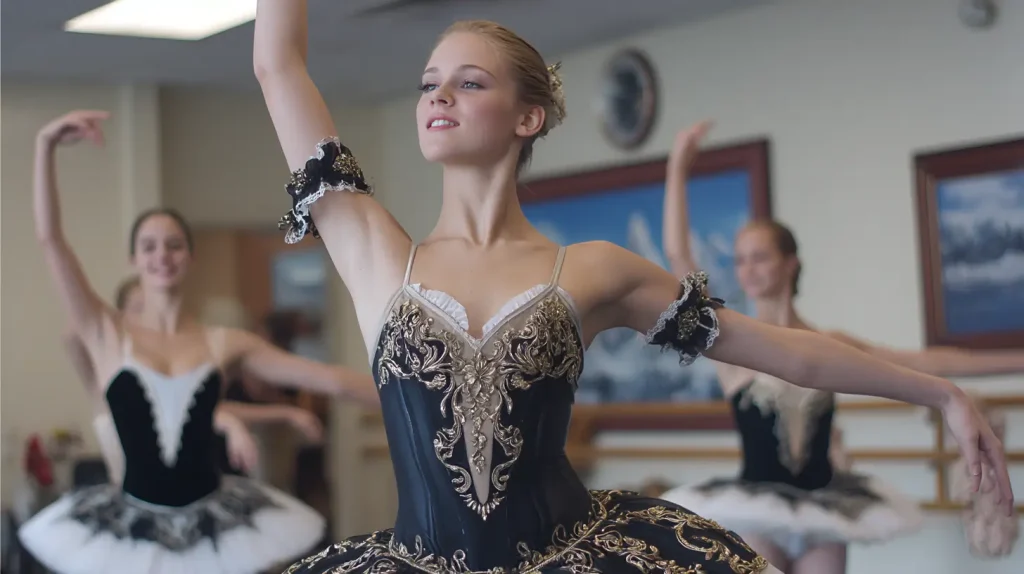
The Cecchetti Method is a beacon in classical ballet, renowned for its rigorous training regime and emphasis on developing a comprehensive understanding of ballet techniques. Enrico Cecchetti, the maestro behind this method, believed in a teaching philosophy that integrated strength and elasticity into a dancer’s training routine, unlike other methods. This approach enhances a dancer’s physical capabilities and fosters a deep connection to the art form.
One of the defining features of the Cecchetti Method is its aim to create well-rounded dancers. This is achieved by integrating strength and elasticity into the training, ensuring that dancers are technically proficient and artistically expressive. The method stands out in the history of ballet for its pioneering role in standardizing teaching techniques. Before Cecchetti, ballet instruction often varied significantly from one teacher to another. The Cecchetti Method brought a systematic, consistent approach to ballet education.
At the heart of the Cecchetti Method is a progressive training approach. This method is meticulously structured, with each exercise and movement building on the previous one. This systematic training enhances a dancer’s technique and ensures an anatomically informed practice that prioritizes the dancer’s physical health and longevity. This blend of discipline, artistry, scientific understanding, and center alignment makes the Cecchetti Method a cornerstone of classical theatrical dancing. The method’s significance in technical training and artistic development is unparalleled, providing a solid foundation for mastering classical dance.
The Legacy of Enrico Cecchetti
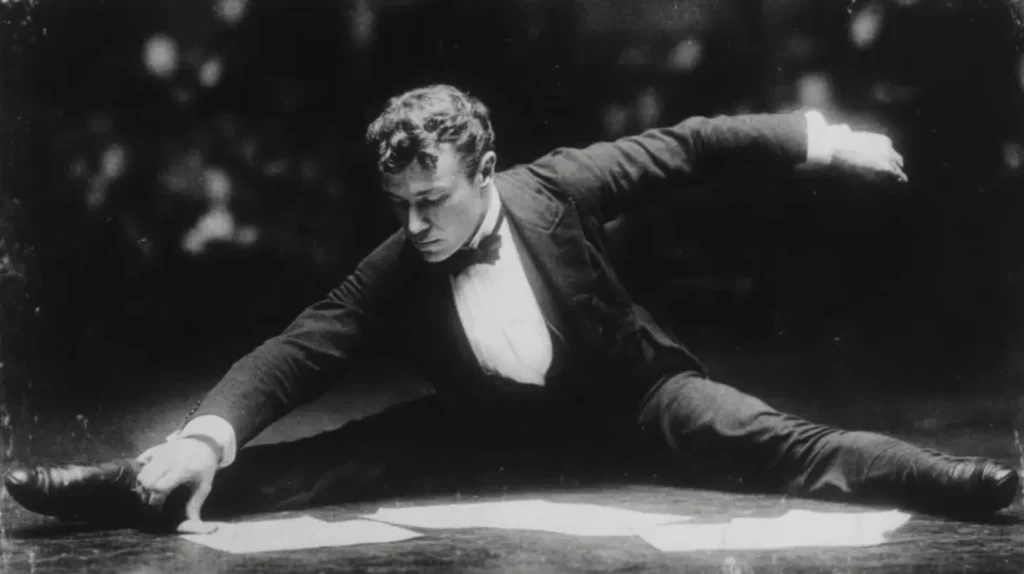
Enrico Cecchetti’s influence on modern classical ballet training is monumental. Born into a family of dancers, Cecchetti’s destiny was intertwined with ballet from a young age. His career saw him play pivotal roles in the Imperial Russian Ballet and later with Diaghilev’s Ballets Russes, where he became a revered ballet master. His deep understanding of ballet technique and innovative teaching methods laid the groundwork for what would become the Cecchetti Method, significantly impacting British ballet by shaping the development of dancers within this tradition.
Cecchetti’s method was significantly influenced by Carlo Blasis, who was credited with establishing the first codified ballet technique. Building on these foundations, Cecchetti developed a structured routine of exercises categorized into six sets, each corresponding to a day of the week. This routine ensures that every aspect of a dancer’s technique is addressed systematically for students, promoting balanced development and technical proficiency.
The legacy of Enrico Cecchetti extends beyond his teachings. 1922 the Cecchetti Society was established to preserve and promote his method. Cyril Beaumont, a key figure in documenting Cecchetti’s techniques, served as the first chair of the Society until 1976. This institution plays a crucial role in maintaining the integrity and dissemination of Cecchetti’s teachings, ensuring his principles remain at the forefront of ballet education worldwide.
Key Elements of Cecchetti Ballet Training
The Cecchetti Method is renowned for its meticulous approach to ballet training, focusing on key techniques that form the foundation of a dancer’s skill set. Central alignment and port de bras are fundamental in this training, ensuring dancers develop the necessary balance and fluidity in their movements. These techniques are not just about physical execution but also about embodying the grace and poise that are hallmarks of classical ballet.
Understanding the core elements of Cecchetti ballet training requires a deeper dive into the specific skills and routines that define this method. The following subsections will explore these in detail, from the essential skills and techniques to the daily routines and exercises that shape a dancer’s journey.
We will also examine the progressive approach to training techniques, which ensures that dancers develop their abilities in a structured and effective manner.
Essential Skills and Techniques
A student trained in the Cecchetti Method exhibits a unique blend of qualities that sets them apart. These include coordination, control, purity of line, speed, lyricism, the ability to easily change directions, intense musicality, and an undeniable joy of dancing. The method is designed to strengthen a dancer’s natural skills through the repeated practice of core ballet steps, leading to significant improvements in technique and performance.
Prominent figures in the ballet community advocate for the daily practice of Cecchetti movements, which enhance a dancer’s understanding of line, positioning, and head movement. This daily practice is crucial for a successful career in ballet as it ensures that dancers possess the technical proficiency and artistic expression needed to excel. Historically, professional dancers like Pavlova and Nijinsky were significantly influenced by Enrico Cecchetti’s methods, which have shaped ballet training and continue to impact contemporary dance today.
Many contemporary ballet companies incorporate Cecchetti principles into their training programs, recognizing the method’s value in developing well-rounded dancers.
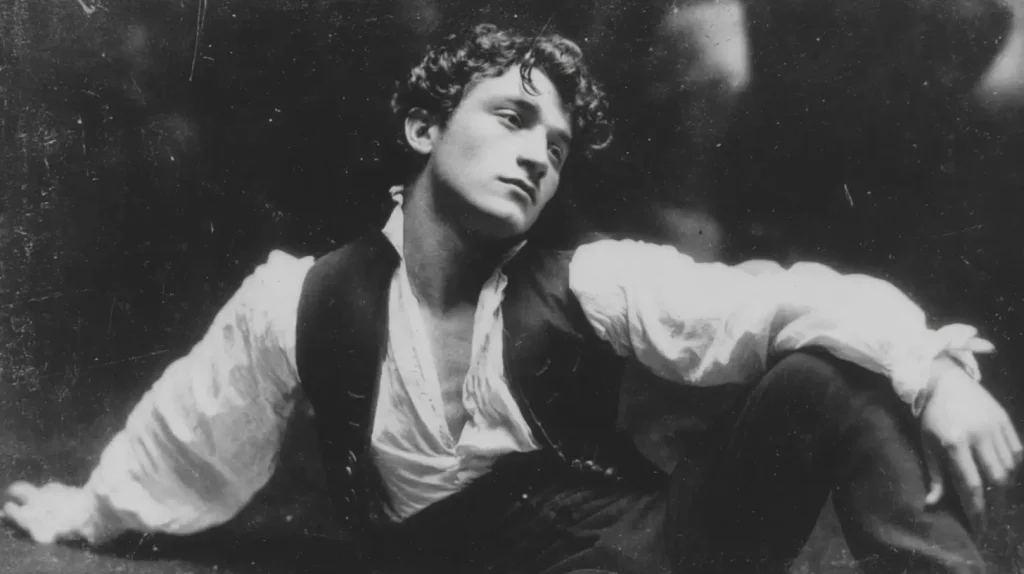
Daily Routines and Exercises
The Cecchetti Method features a structured six-day training plan where each day focuses on a specific set of movements. These include Assemblés, Petits Battements, and Ronds de Jambe. This structured routine ensures that every aspect of a dancer’s technique is developed systematically, promoting balanced physical development and technical proficiency.
Each exercise in the Cecchetti method is designed to build foundational skills, such as the rond de jambe, which helps improve turnout and footwork. Regular training with these exercises is essential for developing a dancer’s overall technique and ensuring that no aspect of their development is neglected.
This methodical approach to training is one of the reasons why Cecchetti-trained dancers are renowned for their technical excellence and artistry.
Progressive Approach to Training
The Cecchetti Method emphasizes a progressive approach to training, focusing on developing balance, poise, strength, flexibility, and artistry in students. This method ensures that new movements are introduced only after mastering previous ones, allowing dancers to build their skills incrementally and effectively. This approach enhances technical proficiency and fosters a deep understanding of clean lines and balance, contributing to an effortless appearance in their movements.
Teachers utilizing the Cecchetti Method emphasize the importance of classical training as a basis for contemporary techniques, fostering versatility in dancers. The principles of the Cecchetti Method continue to adapt, responding to the evolving demands of dance while preserving its foundational techniques. This adaptability ensures that the Cecchetti Method remains relevant and effective in training dancers in modern classical ballet.
Benefits of Cecchetti Ballet Exams

Participating in Cecchetti ballet exams offers numerous benefits for dancers, focusing primarily on developing coordination, control, and purity of line. The rigorous preparation for these exams enhances a dancer’s technical skills, artistic expression, and overall movement quality. Regular classes and exam preparation significantly improve dancers’ discipline and technical proficiency.
The examination also fosters essential life skills such as discipline, focus, confidence, resilience, and teamwork. These skills are invaluable not only for a career in ballet but also for personal development. Taking Cecchetti ballet exams helps students develop self-motivation as they strive to achieve their goals, boosting their self-esteem and confidence in their abilities.
The significance of the Cecchetti Method in contemporary ballet training cannot be overstated. It produces dancers who excel in artistic expression and technical skill, enabling them to collaborate effectively with today’s directors. Achieving exam qualifications is a testament to a dancer’s dedication and hard work, showcasing their commitment to excellence in ballet.
Prominent Cecchetti-trained Dancers
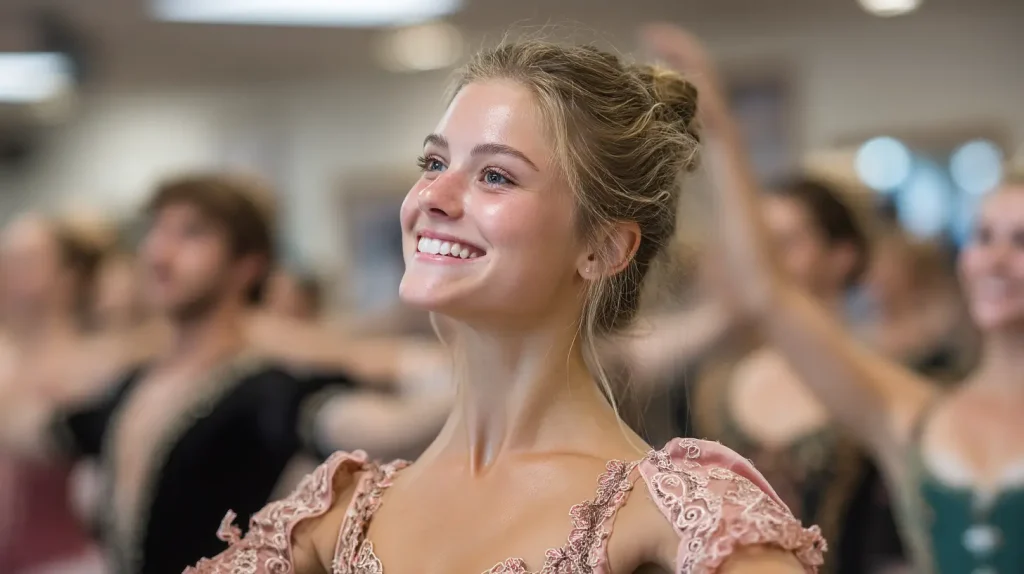
The Cecchetti Method has been a foundational training ground for many of the world’s most influential dancers. Renowned figures such as Anna Pavlova, George Balanchine, and Vaslav Nijinsky were trained in the Cecchetti Method, showcasing its profound impact on their illustrious careers. These dancers brought the elegance and precision of Cecchetti techniques to the global stage, inspiring generations of ballet enthusiasts.
Dancers like Alicia Markova and Tamara Karsavina contributed significantly to classical ballet, demonstrating the exceptional technique and artistry they learned from the Cecchetti Method. Their performances were characterized by a purity of line, technical excellence, and expressive depth, hallmarks of Cecchetti-trained dancers. The legacy of these dancers continues to shape both classical and contemporary ballet performances today.
The ongoing influence of Cecchetti-trained dancers is evident in the ballet world. Their contributions have ensured that the principles of the Cecchetti Method remain central to ballet training, inspiring new generations of dancers to strive for technical excellence and artistic expression. The impact of their training is a testament to the enduring relevance of the Cecchetti Method in the world of classical ballet.
The Role of the Cecchetti Society
The Cecchetti Society was founded to preserve and promote the teachings of the Cecchetti Method. Cyril Beaumont played a crucial role in documenting the method, resulting in a foundational manual that continues to guide ballet educators and students. The Society’s efforts have ensured that the integrity of Cecchetti’s teachings is maintained and disseminated globally.
Branches of the Cecchetti Society are active in various countries, including Australia, South Africa, Canada, Italy, and the USA, promoting Cecchetti ballet worldwide. These branches provide different training and performance opportunities recognized nationally and internationally. The Society’s global reach underscores its commitment to fostering the growth and appreciation of Cecchetti ballet.
The Cecchetti Society collaborates with the Imperial Society of Teachers of Dancing to enhance the impact and reach of Cecchetti ballet training. The Cecchetti Society Trust also provides various grants to support activities that promote Cecchetti ballet and facilitate collaborative projects among teachers and students. These initiatives ensure young dancers have the resources and opportunities to excel in their training and performance.
Cecchetti Ballet Competitions and Funding Opportunities
Competitions provide a platform for students to demonstrate their skills in Cecchetti Classical ballet, allowing them to showcase their talent and hard work. Various competitions are available for young dancers studying the Cecchetti Method, allowing them to gain recognition and experience. These competitions are instrumental in fostering a sense of achievement and motivation among dancers.
Small grants of up to £1,000 are available for local competitions, providing financial support to young dancers from Cecchetti schools. For larger events, such as national or international competitions, general grants exceeding £1,000 are available, ensuring that dancers have the resources needed to participate and excel. These funding opportunities are crucial for the development and career opportunities of dancers studying the Cecchetti Method.
The impact of these competitions and funding opportunities extends beyond financial support. They provide dancers with valuable experiences that enhance their skills and confidence, preparing them for future professional endeavors. By participating in these events, dancers advance their careers and contribute to the ongoing legacy of the Cecchetti Method in the ballet world.
Training Young Dancers in Cecchetti Ballet
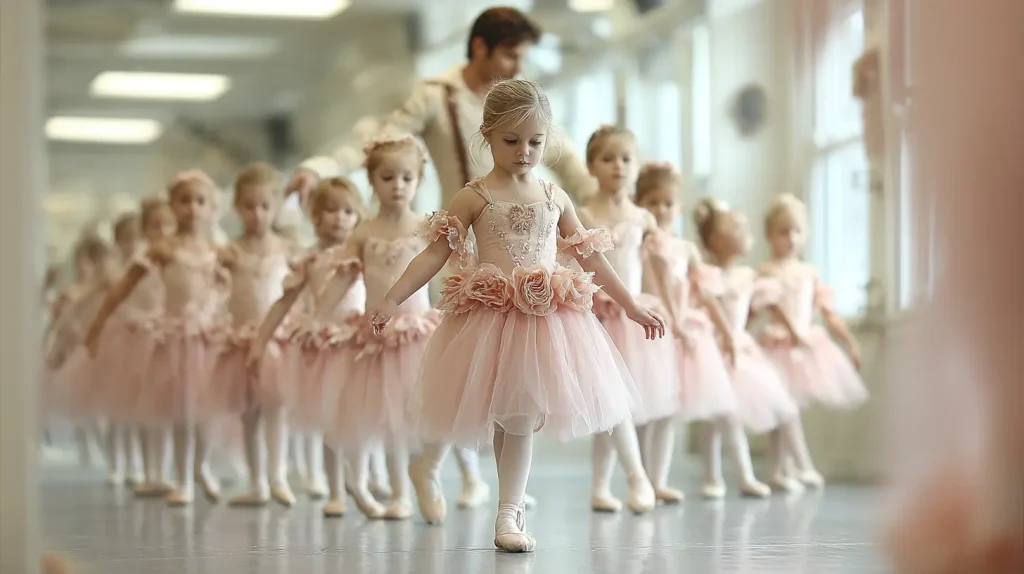
Training young dancers in the Cecchetti Method involves a comprehensive approach that nurtures their development from a young age. The Cecchetti Scholarship Scheme offers full tuition coverage for talented young dancers selected through auditions, allowing them to receive intensive, high-quality training. These scholarships are also available for young dancers to attend intensive summer courses, further enhancing their Cecchetti training.
The Cecchetti Method employs a gradual training system, allowing dancers to build essential strength and coordination tailored to their progression through various skill levels. Students progress through six graded levels to build on previous skills and knowledge. This systematic approach ensures dancers develop a strong foundation in ballet technique, which is crucial for their growth and success in the field.
Prestigious institutions like the Royal Ballet School significantly shape ballet education and training quality. The collaboration and historical context provided by such institutions have influenced the development of the Cecchetti Method, ensuring that students receive top-tier training.
Daily training in the Cecchetti Method involves learning ballet patterns and understanding French terminology and English translations. Even students who do not pursue exams benefit from this teaching method by developing posture, poise, and balance.
The emphasis on aplomb, or vertical alignment, is a key component of Cecchetti training, helping dancers maintain proper posture and balance from head to toe. This comprehensive training helps young dancers build a strong foundation, allowing them to explore a range of contemporary dance forms confidently.
Modern Applications of Cecchetti Principles
The Cecchetti Method remains relevant and is utilized in training dancers worldwide today. Its principles are not only preserved but also adapted to meet the evolving demands of modern classical ballet. For example, the Cecchetti Council of America runs a summer intensive program for dancers aged 11 to 21 to enhance their skills across various dance styles. This program reflects the adaptability of the Cecchetti Method to contemporary ballet training.
The Cecchetti summer program participants attend daily ballet classes, courses in other dance genres, and topics like nutrition and injury prevention. This holistic approach to training ensures that dancers are technically proficient and well-rounded individuals who understand the importance of health and well-being in their careers. Integrating Cecchetti principles into these programs highlights the method’s enduring relevance in modern ballet.
Modern applications of Cecchetti principles extend beyond formal training programs. Contemporary ballet companies often incorporate Cecchetti techniques into their training regimens, recognizing the method’s value in developing technically proficient and artistically expressive dancers. By embracing the foundational techniques and progressive approach of the Cecchetti Method, these companies ensure that their dancers can meet the high demands of today’s ballet performances while preserving the elegance and precision that define classical ballet.
| Country | Key Institutions and Contributions |
|---|---|
| United Kingdom | The Cecchetti Society: Established in 1922 by Cyril W. Beaumont in London, with Cecchetti as its first president. It later merged with the Imperial Society of Teachers of Dancing (ISTD) in 1924, which continues to promote the Cecchetti Method through examinations and teacher training programs. The Cecchetti Centre: Founded in 1983 by Richard Glasstone in London, this center serves as a hub for excellence in Cecchetti training, offering classes and workshops for students and teachers. Influence on British Ballet: Cecchetti’s teachings have profoundly impacted British ballet, with notable figures like Dame Ninette de Valois and Dame Marie Rambert incorporating his methods into their work, leading to the establishment of institutions such as The Royal Ballet and Rambert Dance Company. |
| Italy | – ANCEC Italia (Associazione Nazionale Coreutica Enrico Cecchetti): Dedicated to preserving and promoting the Cecchetti Method within Italy, ANCEC Italia is a key member of Cecchetti International Classical Ballet (CICB), collaborating with other national societies to uphold Cecchetti’s legacy. |
| France | – Adoption and Integration: While France has its classical ballet traditions, elements of the Cecchetti Method have been integrated into French ballet training, particularly emphasizing technical precision and fluidity. |
| Portugal | – Presence and Practice: Although not as prominently established as in other European countries, the Cecchetti Method is practiced within certain ballet schools and studios in Portugal, contributing to the diverse ballet training landscape. |
Ballet Evolved – Enrico Cecchetti (1850-1928)
Resume
The Cecchetti Method has left an indelible mark on the world of classical ballet, shaping generations of dancers with its rigorous training regime and comprehensive approach to ballet technique. From its origins with Enrico Cecchetti to its modern applications in contemporary ballet, this method continues to be a cornerstone of ballet education. Its emphasis on strength, elasticity, coordination, and artistic expression ensures that dancers trained in the Cecchetti Method are well-rounded and technically proficient.
As we have explored, the Cecchetti Method’s structured training, progressive approach, and emphasis on exams and competitions provide dancers with the tools they need to succeed in their careers. The legacy of prominent Cecchetti-trained dancers and the ongoing efforts of the Cecchetti Society to preserve and promote this method underscore its enduring significance. By embracing the principles of the Cecchetti Method, dancers can continue to achieve excellence in classical and contemporary ballet, ensuring that this timeless technique remains relevant for future generations.
Frequently Asked Questions
What is the Cecchetti Method in ballet?
The Cecchetti Method is a structured ballet training system devised by Enrico Cecchetti, which focuses on cultivating strength, elasticity, coordination, and artistic expression through progressive exercises. This method aims to produce well-rounded dancers.
How does the Cecchetti Method benefit young dancers?
The Cecchetti Method benefits young dancers by fostering essential strength, coordination, and technique through a structured training system. It also opens avenues for scholarships, competitions, and advanced programs to further their development and career opportunities.
What role does the Cecchetti Society play in ballet training?
The Cecchetti Society plays a crucial role in ballet training by preserving and promoting the Cecchetti Method, providing training and performance opportunities, and offering grants and scholarships to support teachers, dancers, and educators worldwide. This commitment enhances the quality of ballet education and fosters talent within the community.
Who are some famous dancers trained in the Cecchetti Method?
Notable dancers trained in the Cecchetti Method include Anna Pavlova, George Balanchine, and Vaslav Nijinsky, all of whom have significantly contributed to classical ballet and exemplified the technique and artistry of this method.
How is the Cecchetti Method applied in modern ballet training?
The Cecchetti Method is integrated into modern ballet training by programs such as the Cecchetti Council of America’s summer intensive, which combines various dance styles with traditional ballet techniques. Additionally, contemporary ballet companies utilize Cecchetti principles to enhance dancers’ technical proficiency and artistic expression.
What are the “days-of-the-week” exercises in Cecchetti training?
Enrico Cecchetti assigned specific step families to each day—Monday assemblés, Tuesday petits battements, Wednesday ronds de jambe, Thursday jetés, Friday batterie and Saturday grand allegro—to ensure that every technical facet is revisited each week.
Why does the method promote natural turnout instead of forcing 180 degrees?
The syllabus asks dancers to rotate only as far as the hip joints allow, protecting knees and lower backs while developing clean lines and stability.
How are Cecchetti examinations structured differently in the UK and the USA?
In the UK, the ISTD offers Graded, Vocational Graded, and Teaching exams, whereas the U.S. hierarchy runs from Grade 1 to Grade 8 with tiered pass levels such as Pass Plus or Highly Commended.
What is the minimum age to present for the Intermediate Foundation exam?
ISTD regulations set the lower limit at 11 years, provided the teacher confirms the student’s physical readiness.
What exactly is the Enrico Cecchetti Diploma?
This capstone examination, open to dancers or teachers after Advanced 2, certifies mastery of the full method but does not itself grant teaching status.
Which bodies oversee Cecchetti training worldwide?
Cecchetti International Classical Ballet (CICB) links national societies such as the Cecchetti Council of America, Cecchetti Ballet Australi, and the ISTD Cecchetti Faculty in the UK.
What is the Cecchetti International Classical Ballet Competition?
Held every three years, the CICB competition invites junior and senior dancers who have passed Intermediate or Advanced 1; the 2024 edition was hosted in Holland, Michigan, USA.
How does the syllabus cultivate musicality?
Class combinations are composed to match musical phrases precisely, and exam score sheets include a separate mark for timing, phrasing, and dynamic nuance.
What distinguishes Cecchetti port de bras from other schools?
The method codifies eight flowing arm sequences that pass through the “gateway” (fifth en avant), encouraging an expansive chest and forward-projected épaulement.
When was point work first introduced?
Pointe begins after Grade 4 and is extended in Intermediate and higher levels, where dedicated barre and centre sections build strength progressively.
What features of the syllabus support male virtuosity?
Advanced exams demand batterie, successive double tours en l’air and high-elevation cabrioles, systematically preparing men for classical solo roles.
Can adult beginners pursue Cecchetti exams?
Yes—societies impose no upper age limit, and adult-oriented online programs based on the Cecchetti grades provide structured entry points.
How are Cecchetti teachers certified?
Progression runs from Teachers’ Grade Certificates through Associate, Licentiate, and Fellowship, each examination combining practical demonstration with theory in anatomy, music, and history.
Why is Cecchetti training valuable for contemporary or jazz dancers?
The emphasis on clean lines, precise coordination, and rhythmic awareness translates readily to modern, jazz, and commercial choreography, enhancing versatility and employability.
Which iconic dancers credit Cecchetti principles for their artistry?
Artists from Anna Pavlova to Dame Monica Mason have acknowledged the role of the method in developing their clarity of line, footwork, speed, and expressive upper body.
How soon are examination results issued in the USA?
The Cecchetti Council of America mails certificates to sponsoring teachers within one week, ensuring prompt feedback.
Does the syllabus foster creativity as well as technique?
Beginning with Grade 4, candidates must choreograph and perform a short solo; higher levels demand individual interpretation, encouraging artistic growth alongside technical progress.

